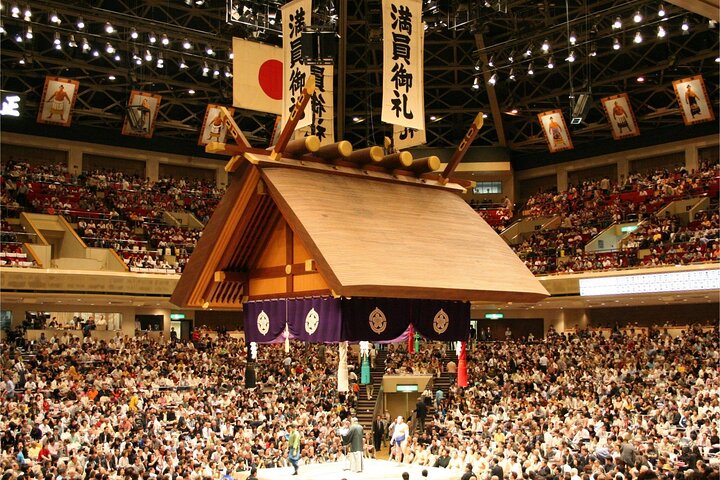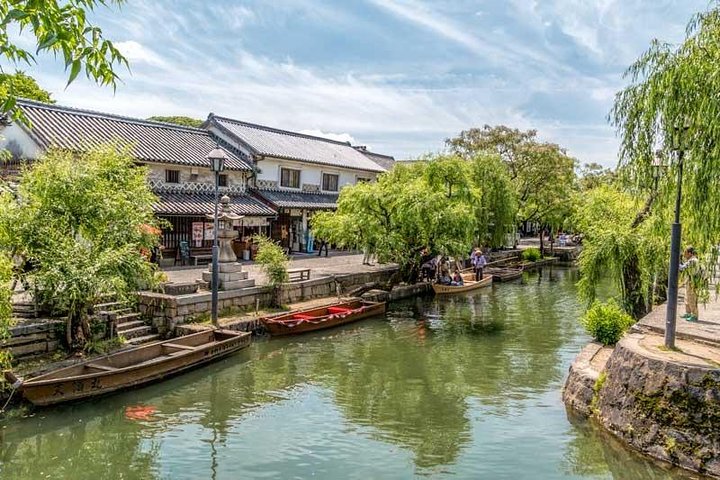Explore the historical and cultural wonders of Edo Tokyo with a licensed guide. Discover Edo period buildings, the National Showa Memorial Museum, and the capital of Sumo in Japan. Book now!
Explore the historical and cultural wonders of Edo Tokyo with a licensed guide. Discover Edo period buildings, the National Showa Memorial Museum, and the capital of Sumo in Japan. Book now!
-
Imperial Palace - Please note that this tour does not include entry to the interior of the Imperial Palace
The current Imperial Palace (皇居, Kōkyo) is situated on the historic site of Edo Castle, featuring a vast park area encircled by moats and impressive stone walls in central Tokyo, just a short stroll from Tokyo Station. It serves as the…
-
Imperial Palace - Please note that this tour does not include entry to the interior of the Imperial Palace
The current Imperial Palace (皇居, Kōkyo) is situated on the historic site of Edo Castle, featuring a vast park area encircled by moats and impressive stone walls in central Tokyo, just a short stroll from Tokyo Station. It serves as the residence of Japan’s Imperial Family.
Edo Castle was once the seat of the Tokugawa shogunate, which governed Japan from 1603 to 1867. In 1868, the shogunate was overthrown, and the nation’s capital and Imperial Residence were relocated from Kyoto to Tokyo. By 1888, the construction of a new Imperial Palace was completed. The palace was destroyed during World War II and subsequently rebuilt in the same architectural style.
- Ryogoku Kokugikan - Ryogoku (両国, Ryōgoku) is a district in Tokyo known for its sumo stadium, numerous sumo stables, chanko restaurants, and other sumo-related attractions. It is the heart of the sumo world. Sumo events have been held in this area for many years, but until the early 20th century, sumo tournaments took place outdoors at shrines and temples.
In 1909, the first permanent sumo hall was constructed in the Ryogoku area. The current sumo stadium, the Kokugikan, is the fourth to be built in Tokyo and has been in operation since 1985. It accommodates over 10,000 spectators and hosts three of the six annual sumo tournaments (in January, May, and September).
- The Sumida Hokusai Museum - The Sumida Hokusai Museum (すみだ北斎美術館, Sumida Hokusai Bijutsukan) is dedicated to the ukiyo-e artist Katsushika Hokusai, often simply called Hokusai. His most famous works include The Great Wave off Kanagawa and Red Fuji, part of the Thirty-Six Views of Mount Fuji series. The museum opened in November 2016 in Tokyo’s Sumida Ward, where Hokusai was born and spent much of his life.
- Kanto Earthquake Memorial Museum - Discover the story of the Great Kanto earthquake and Tokyo’s remarkable reconstruction.
- Ryogoku Edo Noren - Savor Tokyo-style cuisine in this food court designed to resemble Edo period Japan.
- Nihonbashi - Nihonbashi was historically the starting point of five major roads that traversed Japan and thrived as the center of Edo, now known as Tokyo. Nihonbashi retains a traditional Japanese atmosphere while continuing to evolve as a modern city. One of its attractions is its convenient location, just a less than 10-minute walk from Tokyo Station.
- Sumida River - The Sumida River (Sumidagawa) is one of Tokyo’s principal rivers and the most recognizable to visitors. It originates just north of Tokyo and flows eastward through the eastern part of the city.
- Edo-Tokyo Open Air Architectural Museum - Situated in western Tokyo, the Edo-Tokyo Open Air Architectural Museum provides a unique insight into Japanese culture. Established in 1993 by the Tokyo Metropolitan Government, this architectural park, despite its relatively recent inception, serves as a cultural hub with centuries-old buildings relocated and preserved on its grounds. Visitors can spend hours exploring historical structures and uncovering the cultural heritage they embody.
- Fukagawa Edo Museum - The Fukagawa Edo Museum in Tokyo offers a distinctive look into life during the Edo period (1603–1868). Unlike traditional museums, it recreates an entire Edo-era neighborhood with streets, houses, shops, and a canal, allowing visitors to walk through history. Interiors are furnished with period-appropriate items, and staff, sometimes dressed in Edo-style clothing, provide explanations and demonstrations. Exhibits highlight traditional crafts, festivals, and daily life, from samurai residences to commoners’ homes. Interactive elements enable visitors to explore and experience history firsthand. This immersive museum is ideal for families, students, and anyone interested in Japanese culture and history.

- Meet up with guide on foot within designated area of Tokyo
- Licensed Local English Speaking Guide
- Customizable Tour of your choice of 3-4 sites from ‘What to expect’ list
- Meet up with guide on foot within designated area of Tokyo
- Licensed Local English Speaking Guide
- Customizable Tour of your choice of 3-4 sites from ‘What to expect’ list
- Transportation fees, Entrance fees, Lunch, and Other personal expenses
- Private Vehicle
- You cannot combine multiple tour groups.
- Guide Entry fees are only covered for sights listed under What to Expect.
- Transportation fees, Entrance fees, Lunch, and Other personal expenses
- Private Vehicle
- You cannot combine multiple tour groups.
- Guide Entry fees are only covered for sights listed under What to Expect.
In the modern city of Tokyo, it is easy to forget that things were once very different. Join our tour guides on a tour of Tokyo’s history and culture. Learn what it was like before the city became one of the biggest in the world. Your guide can take you to fascinating sights like:
Edo Tokyo Open Air Architectural Museum: Be transported back in time in…
In the modern city of Tokyo, it is easy to forget that things were once very different. Join our tour guides on a tour of Tokyo’s history and culture. Learn what it was like before the city became one of the biggest in the world. Your guide can take you to fascinating sights like:
Edo Tokyo Open Air Architectural Museum: Be transported back in time in this collection of Edo period buildings that are in a beautiful outdoor museum.
National Showa Memorial Museum: A look into the life of those in during and post-war Tokyo.
Ryogoku Area: Learn about the capital of Sumo in Japan. Try Chanko Nabe, the Sumo wrestler hotpot!
If you want to enrich your experience in Tokyo with some history, be sure to join us on this tour! Once you place your reservation, a guide will be in touch with you directly. Choose the top sights you would like to see and your guide will plan your private itinerary! If you need more time, please contact us for hourly extension fees.
We hope to guide you soon!
- This is a walking tour. Pick up is on foot.
For a full refund, cancel at least 24 hours before the scheduled departure time.
For a full refund, cancel at least 24 hours before the scheduled departure time.























